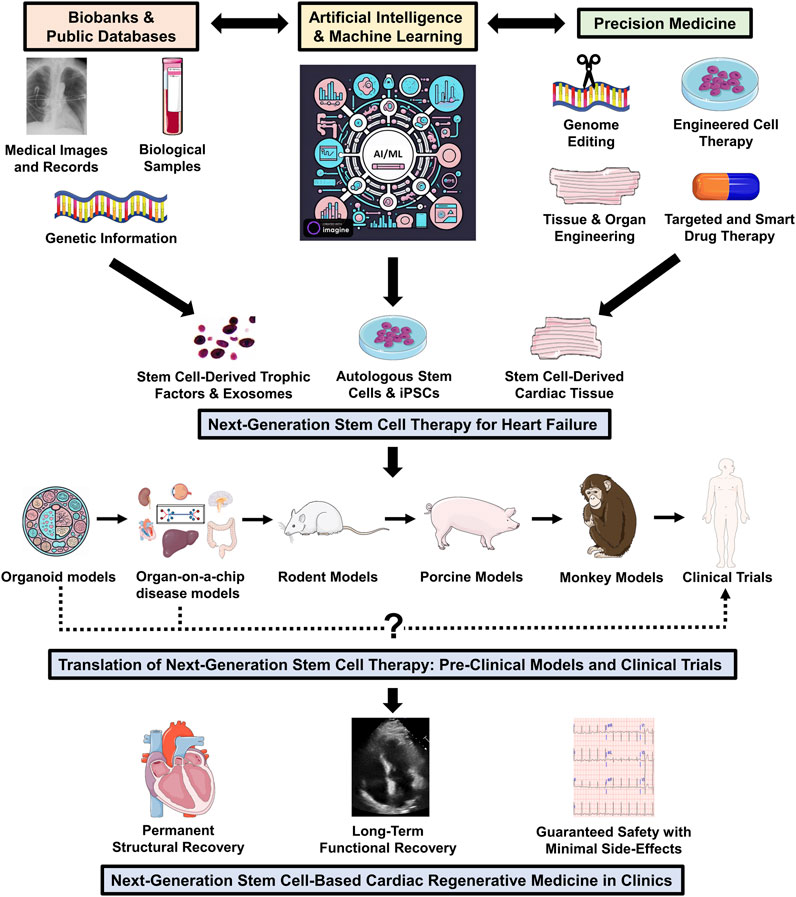Table of Contents
One is by changing right into new heart cells that replace broken ones. This entails releasing various elements that boost tissue fixing and regeneration without actually ending up being brand-new cells.
The heartespecially after injuryisn't an inviting place. It's tough for new cells to hold and even harder for the body to accept them. Even if the cells make it through, they still need to get in touch with the heart's electric system. Without the necessary electric combining, the cells can not sync with the heart's natural rhythm.
Scientists are running medical trials to determine what kind of stem cells function best, how to supply them safely, and just how to decrease the total risks included. They are also working with services like utilizing bioengineered encouraging scaffolds or genetics editing to boost efficiency. Progress is being made on a number of fronts, and each research gets us a little bit closer to making stem cell therapy a routine component of cardiac treatment.
There's likewise very early evidence that this treatment might minimize the threat of cardiac arrest after a cardiac arrest. Stem cell therapy isn't a treatment allnot yetbut it's pointing us in the appropriate direction. As research proceeds we may quickly see a future where the heart can do what as soon as appeared difficult: recover itself.

There are still challenges, like cell survival and appropriate integration, development is appealing. Future techniques and technologies like bioengineering and gene editing can open the full capacity of stem cell treatments, offering wish for people taking care of heart disease. With cardiac stem cells, there's a possibility for your heart to recover itself, resulting in far better outcomes and a healthier future.
Innovative approach to High Blood Pressure that uses stem cells
There is no treatment approach that straight reinforces the heart muscle other than stem cell treatment. Improvements at various levels were measured in 87% of individuals receiving stem cell treatment for heart failure and ischemic heart diseases. Stem cells have the ability to deal with unwell capillaries when they touch the ill blood vessel wall and they're likewise used to deal with cardiac arrest by developing into heart muscle mass cells if there is weakness in the heart muscles.
Therapy is executed utilizing endothelial, mesenchymal stem cells (obtained from the individual's very own adipose cells or bone marrow) or fetal stem cells. Stem cells are carried out intravenously to the patient. Cells require blood circulation to preserve their lives and features. This blood circulation brings oxygen and nutrients to the cells and removes waste.
Atherosclerosis, i.e. vessel tightness, is the major source of total quiting of blood flow or decreased blood flow. Numerous factors such as high cholesterol, hypertension, smoking result in development of plaques in the vessel wall surface in time and loss of elasticity of the vessel. These plaques expand gradually, narrowing the vein and can prevent appropriate quantity of blood from getting in the vessel (chronic).
Heart illness therapies depend on the kind and extent of the desease. Intense disorders such as heart assaults require instant clinical interventions to minimize heart damages.
There is no therapy method that directly reinforces the heart muscular tissue apart from stem cell therapy. Stem cells have the ability to treat sick capillaries when they touch the unwell capillary wall surface. They're additionally used to treat cardiac arrest by transforming right into heart muscle cells if there is weak point in the heart muscle mass.
Stem cell injections for High Blood Pressure with minimal downtime
They speed up the treatment of heart muscle mass inflammation and inflammation. In this means, the heart muscle mass, the general autoimmune system and various other factors are dealt with.

The number of cells to be carried out is established according to the age and weight of the person. Treatment is performed making use of endothelial, mesenchymal stem cells (obtained from the person's own fat or bone marrow) or fetal stem cells. The choice is made according to the client's condition.
It boosts within a few hours after heart is damaged and continues to be in such degrees for up to 2 weeks. CK-MB - an unique form of Creatine Kinase enzyme, which is mostly located in heart muscle.
Navigation
Latest Posts
Exploring using stem cells to support Heart Failure
Is stem cell therapy right for Atherosclerosis with stem cells?
Top clinics for stem cell therapy targeting Peripheral Artery Disease